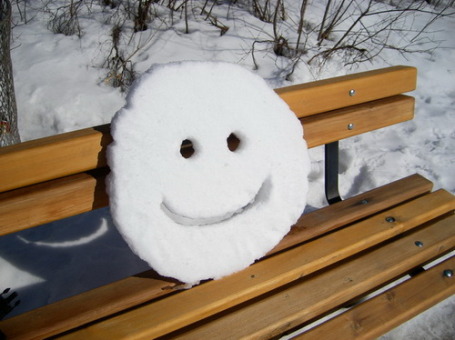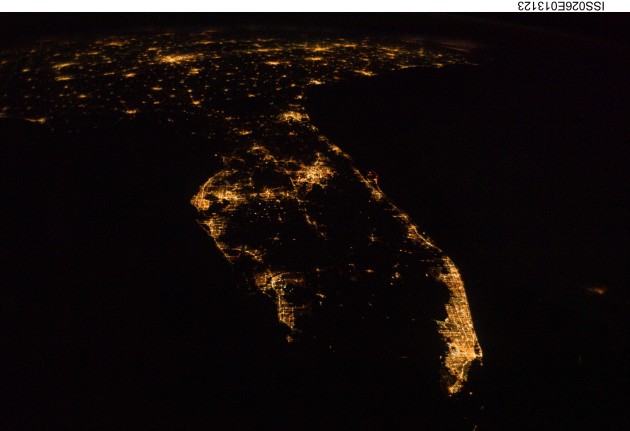
10 months out of the year a predicted high of 20s would set off alarm bells and a hyperventilating public. People would be marching on the local National Weather Service office! But in 2018, after the coldest winter in 4 years, Minnesotans are downright thankful. Where else would that happen? Fargo? Fairbanks? Novosibirsk, Siberia?
Valentine’s Day will run 10-15F warmer than average, with highs near 40F in the MSP metro. Another surge of Pacific air boosts the mercury to 40F Sunday before a relapse of cool, Canadian air. Nothing polar or arctic is lurking on the northern horizon, but there will be more cold fronts; probably a few more nights below zero before birds begin to chirp again.
One-Two Punch of Disease and Irma Has Left Florida Citrus Reeling. NBC News reports: “…Irma knocked 50 to 90 percent of Florida’s citrus fruit to the ground in some areas, according to the state commissioner of agriculture, Adam Putnam, causing $760 million in damage in the worst year for Florida oranges since 1945. But more was damaged than just a year’s crop. Citrus accounts for approximately 45,000 full- and part-time jobs in the state. Hurricane Irma is credited with wiping out nearly 56,000 jobs directly and indirectly tied to Florida’s agricultural sector and dealing a $2.39 billion blow to labor income...”
Rural America’s Drinking-Water Crisis. A story at New Republic underscored the importance of clean, safe drinking water – something none of us should take for granted: “…Put all these systems together, however, and rural America’s drinking-water situation constitutes a crisis of a magnitude greater than Flint, or any individual city. From Appalachian Kentucky to the Texas borderlands, millions of rural Americans are subject to unhealthy and sometimes illegal levels of contaminants in their drinking water, whether from agriculture, or coal, or plain old bad pipes. And as the economic gap separating rural America from its urban and suburban counterparts continues to grow, this basic inequality is set to become more entrenched—and possibly more dangerous, as sickness seeps into rural America….”
Image credit: “Photos of tap water in Martin County, Kentucky, each taken by different residents at various points from 2016 to 2018.” Martin County Water Warriors Facebook group.
Is Cape Town Thirsty Enough to Drink Seawater? Desalination technology is getting better (and cheaper), but will it help people living in this South African city? Here’s a clip from a story at WIRED.com: “Cape Town is withering. If current projections hold, the South African city of 4 million will run out of water on May 11, known as Day Zero. It’s been three long years of drought—we’re talking a once every 1,000 years kind of problem that Cape Town’s water infrastructure just wasn’t built for. The irony is that a whole sea of water laps at the shores of the coastal city. But if you wanted to drink it, you’d have to build an expensive, energy-intensive desalination facility. Cape Town is indeed rushing to bring such projects online, at least on a temporary basis, and in so doing is exposing a dire reality: Pockets of humanity around the world may have to rely on the sea to survive drought in the very near future. Because it’s likely that climate change is exacerbating this drought.…”
The Enlightenment is Working. It’s easy to get bogged down in gloom and doom, but Harvard Professor of Psychology Stephen Pinker has some much needed perspective in an Op-Ed at The Wall Street Journal; here are a few excerpts: “…The proportion of people killed annually in wars is about a quarter of what it was in the mid-1980s, a sixth of what it was in the early 1970s, and a 16th of what it was in the early 1950s….Americans have become 96% less likely to be killed in an auto accident, 88% less likely to be mowed down on the sidewalk, 99% less likely to die in a plane crash, 59% less likely to fall to their deaths, 92% less likely to die by fire, 90% less likely to drown, 92% less likely to be asphyxiated, and 95% less likely to be killed on the job...”
Illustration credit: Robert Neubecker.
The Case for Optimism. Following up on his article and book, Vox has an interview with Pinker. Here’s an excerpt that caught my eye: “…When cars were introduced, there was a huge increase in the rate of deaths from car accidents and pedestrian fatalities. But those plummeted as safety measures were created and better roads and traffic laws and technologies were introduced. We saw some a similar trajectory in the case of pollution during and after the Industrial Revolution. Initially, air and water quality were drastically diminished, sometimes catastrophically. But then legislation and technologies were introduced to deal with the harms, and we’ve seen steady improvements in air and water quality across the West. Other than the bleak technology of weaponry, which is in a special category because it’s designed to harm people, I think the other technologies can seem more frightening than they ultimately are because when they’re introduced, we have to deal with both the harms and the benefits before we come up with countermeasures...”
File image: Shutterstock.
73 Mind-Blowing Implications of Driverless Cars and Trucks. Geoff Nesnow has the story at Medium: “I originally wrote and published a version of this article in September 2016. Since then, quite a bit has happened, further cementing my view that these changes are coming and that the implications will be even more substantial. I decided it was time to update this article with some additional ideas and a few changes. As I write this, Uber just announced that it just ordered 24,000 self-driving Volvos. Tesla just released an electric, long-haul tractor trailer with extraordinary technical specs (range, performance) and self-driving capabilities (UPS just preordered 125!). And, Tesla just announced what will probably be the quickest production car ever made — perhaps the fastest. It will go zero to sixty in about the time it takes you to read zero to sixty. And, of course, it will be able to drive itself. The future is quickly becoming now. Google just ordered thousands of Chryslers for its self-driving fleet (that are already on the roads in AZ)…”
Image credit: “To drive or to be driven. Is that the question?“
Inside the Two Years That Shook Facebook – And The World. If you haven’t read the WIRED.com piece you should right now; here’s a clip: “…This is the story of those two years, as they played out inside and around the company. WIRED spoke with 51 current or former Facebook employees for this article, many of whom did not want their names used, for reasons anyone familiar with the story of Fearnow and Villarreal would surely understand. (One current employee asked that a WIRED reporter turn off his phone so the company would have a harder time tracking whether it had been near the phones of anyone from Facebook.) The stories varied, but most people told the same basic tale: of a company, and a CEO, whose techno-optimism has been crushed as they’ve learned the myriad ways their platform can be used for ill. Of an election that shocked Facebook, even as its fallout put the company under siege. Of a series of external threats, defensive internal calculations, and false starts that delayed Facebook’s reckoning with its impact on global affairs and its users’ minds. And—in the tale’s final chapters—of the company’s earnest attempt to redeem itself…”
Image credit: Eddie Guy.
InfoCalypse Now. The same guy that predicted the 2016 Fake News Crisis is now worried about an information apocalypse. Lovely. Here’s the intro to a story at Buzzfeed: “In mid-2016, Aviv Ovadya realized there was something fundamentally wrong with the internet — so wrong that he abandoned his work and sounded an alarm. A few weeks before the 2016 election, he presented his concerns to technologists in San Francisco’s Bay Area and warned of an impending crisis of misinformation in a presentation he titled “Infocalypse.” The web and the information ecosystem that had developed around it was wildly unhealthy, Ovadya argued. The incentives that governed its biggest platforms were calibrated to reward information that was often misleading and polarizing, or both. Platforms like Facebook, Twitter, and Google prioritized clicks, shares, ads, and money over quality of information, and Ovadya couldn’t shake the feeling that it was all building toward something bad — a kind of critical threshold of addictive and toxic misinformation...”
Which Winter Olympic Sport is Best For You? Take the quick 8-question quiz from FiveThirtyEight to get your personalized result. My result is below. Freestyle skiing? Sounds good on paper but it would lead to an untimely death on the slopes, I fear.
Not an Olympic Sport: Swedes Are Literally Skating on Thin Ice. “Wild ice” skaters seek out precarious black ice, which is only a few dozen millimeters thick and emits laser-like sounds as weight passes over it. Details via The Kid Should See This:
This small lake outside Stockholm, Sweden, emits otherworldly sounds as Mårten Ajne skates over its precariously thin, black ice. “Wild ice skating,” or “Nordic skating,” is both an art and a science. A skater seeks out the thinnest, most pristine black ice possible—both for its smoothness and for its high-pitched, laser-like sounds.
File under: Do not try this without experienced wild ice skaters at your side. Mathematician and author Mårten Ajne loves the challenge of long-distance skating on thin, untouched ice, and has written books on the physics and culture of the sport, including safety tips for how to avoid dangerous ice. How does he determine if the black ice is strong enough to bear his weight?...”
30 F. maximum temperature in the Twin Cities (MSP International Airport) on Tuesday.
28 F. average high on February 13.
48 F. high on February 13, 2017.
February 14, 1923: A ‘Black Dust Blizzard’ ends after two days. Dirt blown into the state from North Dakota created drifts.
WEDNESDAY: Touch of March, mild sun. Winds: S 10-15. High: near 40
WEDNESDAY NIGHT: Patchy clouds. Low: 23
THURSDAY: Cooler breeze, few flakes around. Winds: NW 8-13. High: 33 (falling)
FRIDAY: Intervals of sun, cooler than average. Winds: SW 7-12. Wake-up: 8. High: 20
SATURDAY: More clouds, no weather drama. Winds: SW 8-13. Wake-up: 11. High: 28
SUNDAY: Cloudy, windy and milder. Snow up north. Winds: S 10-20. Wake-up: 22. High: 39
MONDAY: Wet snow or sloppy mix possible. Winds: NE 10-20. Wake-up: 23. High: 27
TUESDAY: Flurries taper, cool breeze. Winds: NW 5-10. Wake-up: 13. High: 26
Climate Stories…
Satellite Observations Show Sea Levels Rising, and Climate Change is Accelerating It. Here’s an excerpt from a CNN summary: “…Using satellite data rather than tide-gauge data that is normally used to measure sea levels allows for more precise estimates of global sea level, since it provides measurements of the open ocean. The team observed a total rise in the ocean of 7 centimeters (2.8 inches) in 25 years of data, which aligns with the generally accepted current rate of sea level rise of about 3 millimeters (0.1 inches) per year. But that rate is not constant. Continuous emissions of greenhouse gases are warming the Earth’s atmosphere and oceans and melting its ice, causing the rate of sea level rise to increase….”
Map credit: “Changes in sea level observed between 1992 and 2014. Orange/red colors represent higher sea levels, while blue colors show where sea levels are lower.” NASA.
Don’t Believe in Climate Change? Energy Companies Do. Here’s an excerpt from The Houston Chronicle: “…While some conservative political leaders still deny that the Earth is heating up due to humans burning fossil fuels and releasing greenhouse gases, the people who produce those fuels and chemicals have recognized the imperative to limit global warming to a rise of 2 degrees Celsius. Many of these companies are recommending a carbon tax, and others are calling on governments to keep predictable environmental regulations. The pleas for reason coming from corporate boardrooms contrast sharply with the sloganeering coming from Republican politicians. Sara Ortwein, the president of Exxon Mobil subsidiary XTO Energy, last week called for “sound policies and regulations” for methane emissions…”
Exxon Sues the Suers in Fierce Climate Change Case. Bloomberg reports: “As climate-change lawsuits against the oil industry mount, Exxon Mobil Corp. is taking a bare-knuckle approach rarely seen in legal disputes: It’s going after the lawyers who are suing it. The company has targeted at least 30 people and organizations, including the attorneys general of New York and Massachusetts, hitting them with suits, threats of suits or demands for sworn depositions. The company claims the lawyers, public officials and environmental activists are “conspiring” against it in a coordinated legal and public relations campaign. Exxon has even given that campaign a vaguely sinister-sounding name: “The La Jolla playbook.” According to the company, about two dozen people hatched a strategy against it at a meeting six years ago in an oceanfront cottage in La Jolla, Calif...”
File image: Reuters.
Sea Level Rise Getting Faster: From Climate Nexus: “Sea level rise is accelerating as the planet warms, new research shows, and the world could see sea levels rise two feet by the end of the century. A study published Monday in the journal Proceedings of the National Academy of Sciences examines 25 years of sea level data, finding that the pace of sea level rise has become faster as ice sheets in Greenland and Antarctica continue to melt. The study calculates the rate of sea level rise has accelerated by .08mm per year, creating a possible overall sea level rise of 2 feet by 2100–an estimate researchers say is conservative as additional ice sheet melting could accelerate sea level rise even more.” (CNN, AP, The Guardian, InsideClimate News, ThinkProgress, Deutsche Welle, Quartz, Newsweek).
File image: National Academy of Sciences.
Coastal Golf Courses Face Climate Change Threat, Claims Report. ESPN.com reports: “Golf’s governing body has stressed that the game needs help to tackle the “wider issue” of climate change after a report highlighted the risk to coastal courses, including Open Championship venues. Wetter winters and coastal erosion linked to climate change are threatening the future of golf, according to a report from the Climate Coalition, which was published Wednesday. Golf is facing an increase in unplayable holes, winter course closures and disruption to professional tournaments due to increased rainfall, while rising sea levels could jeopardize all of the world’s coastal courses by 2100...”
10 Signs That Some of the World’s Most Powerful Money Managers Are Worrying More About Climate Change. It all comes back to managing (all) potential risks. Here’s an excerpt from Business Insider: “Climate risk has arrived as a business issue to be reckoned with. Over the last year, the investment community sent a clear message that they are focused on environmental sustainability and expect companies in which they invest to do the same. Some of the world’s largest money managers have made public commitments to the environment, called on companies to improve disclosures related to climate risk, increased allocations to companies with strong sustainability track records, and overruled board resolutions on climate issues. It’s now clear that public companies that ignore environmental sustainability will increasingly face investor questions, scrutiny, and possibly direct activism. Here are ten notable examples of big money managers highlighting the environment as a top investment concern…”
File image: Ars Technica.

Does Climate Change Cause More War? The Atlantic looks at recent research to see if you can make a case: “It’s one of the most important questions of the 21st century: Will climate change provide the extra spark that pushes two otherwise peaceful nations into war? In the past half-decade, a growing body of research—spanning economics, political science, and ancient and modern history—has argued that it can and will. Historians have found temperature or rainfall change implicated in the fall of Rome and the many wars of the 17th century. A team of economists at the University of California at Berkeley and Stanford University have gone further, arguing that an empirical connection between violence and climate change persists across 12,000 years of human history. Meanwhile, high-profile scientists and powerful politicians have endorsed the idea that global warming helped push Syria into civil war. “Climate change did not cause the conflicts we see around the world,” said Barack Obama in 2015, but “drought and crop failures and high food prices helped fuel the early unrest in Syria...”

For Florida Professors, Climate Change Could be Opportunity or Bust. CBS Miami has the story; here’s an excerpt: “Not paying attention to climate change’s effects in Florida may mean the state will pay for it dearly in the future, according to two Florida State University professors. Professors Eric Chassignet and Associate Professor Vasu Misra, both from the Department of Earth, Ocean and Atmospheric Science, are urging the community to pay more attention to the Sunshine State. Why? Because Florida’s climate is one of its ‘most important assets’ and it could change faster than most think...” (File image: NASA).
How Broadcast TV Networks Covered Climate Change in 2017. Media Matters for America has the report; here’s an excerpt: “Broadcast TV news neglected many critical climate change stories in 2017 while devoting most of its climate coverage to President Donald Trump. Seventy-nine percent of climate change coverage on the major corporate broadcast TV networks last year focused on statements or actions by the Trump administration, with heavy attention given to the president’s decision to withdraw from the Paris agreement and to whether he accepts that human-caused climate change is a scientific reality. But the networks undercovered or ignored the ways that climate change had real-life impacts on people, the economy, national security, and the year’s extreme weather events — a major oversight in a year when weather disasters killed hundreds of Americans, displaced hundreds of thousands more, and cost the economy in excess of $300 billion…”


